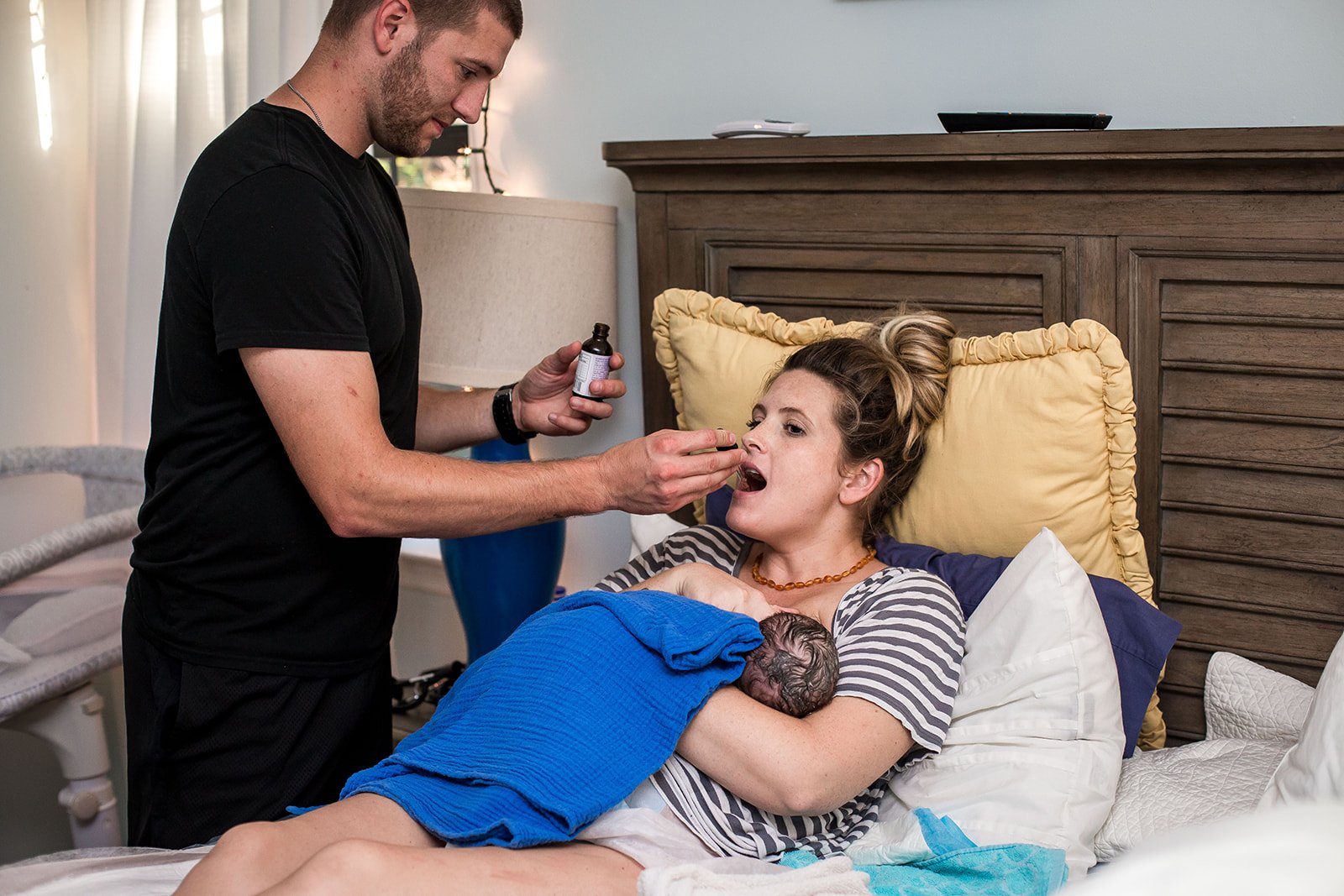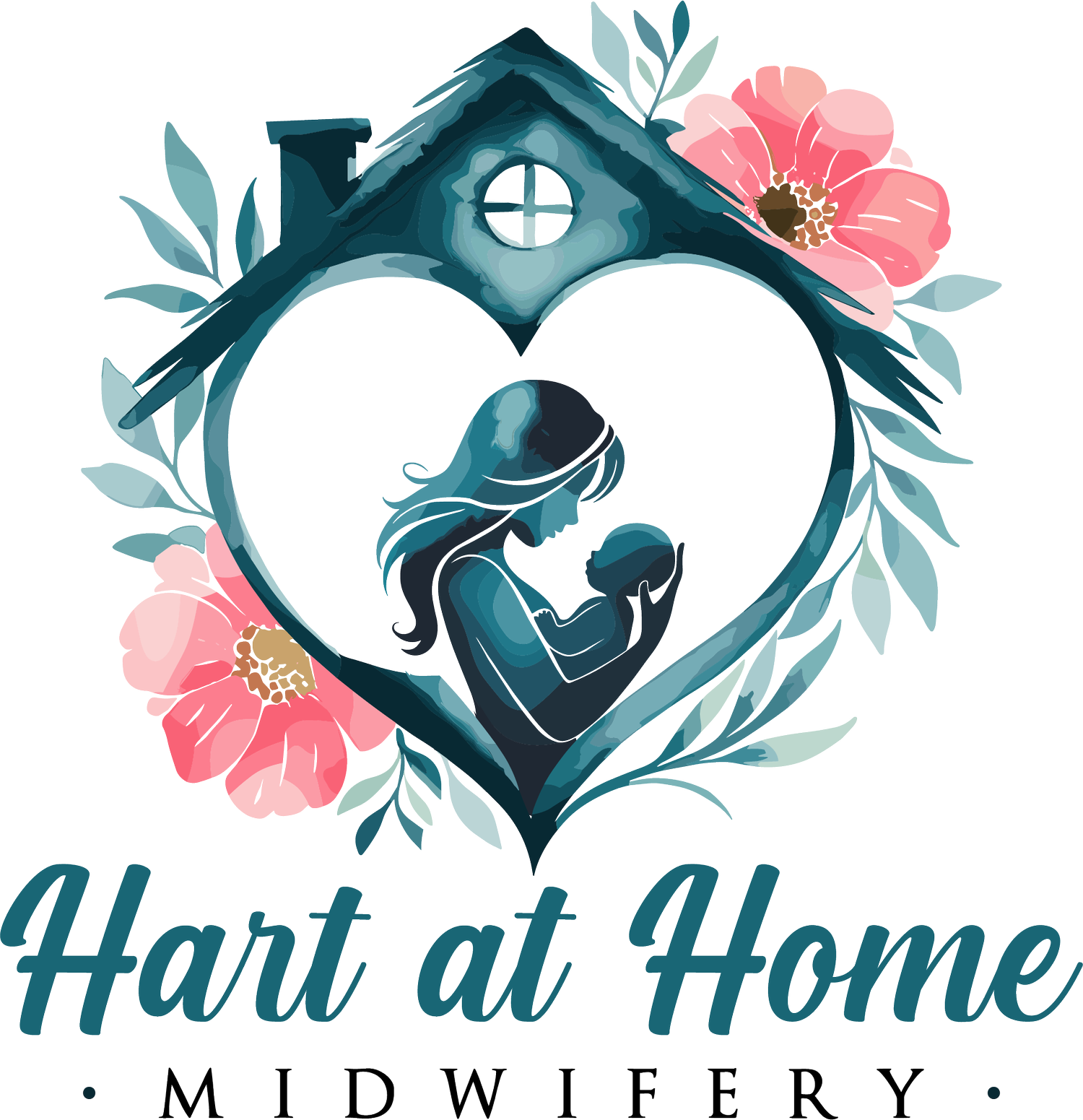Full Scope Midwifery Care with Birth at Home
Evidence-based care before, during, and after birth
Clinical monitoring and assessments throughout pregnancy, labor, birth, and postpartum stages
Resources and education to help you feel empowered and prepared
Visits increasing in frequency as your pregnancy progresses
Undivided attention and support during your birth as well as during the postpartum period
Continued support after your birth









Home Birth FAQs
-
Click here for more information about the financial details of midwifery care.
-
Yes! A doula’s primary purpose is to provide uplifting support to the family during significant transitions, ensuring everyone can excel in their unique roles. Doulas complement, rather than replace, family members, offering guidance and assistance to help the entire unit thrive.
For example, a doula might guide the father on how to comfort the mother during labor, such as demonstrating effective hip squeezes or back rub techniques. When the father needs a short break, the doula can step in temporarily, allowing him time to recharge. Rather than taking over his role, a skilled doula helps him succeed in the role he and the mother envision for him. For the birthing mother, doulas help reduce stress and prevent her from feeling overwhelmed, allowing her to focus on laboring, recovering, and bonding with her baby.
One common misconception is that doulas are only suited for unmedicated births. In reality, doulas support all types of births, offering mothers information, comfort, and care tailored to their individual needs.
-
Doulas serve as the non-clinical members of the birth team, providing emotional, spiritual, physical support, advocacy, and information. They frequently work alongside midwives, though their responsibilities differ significantly.
Midwives oversee the medical aspects of pregnancy and birth, guiding mothers in creating safe birth plans and monitoring both mother and baby during labor and delivery.
Doulas, by contrast, offer emotional and practical support tailored to the mother’s wishes, advocating for her birth plan while leaving medical matters to the midwife.
To visualize this collaboration, imagine the doula positioned near the mother’s head, alongside the father, providing coaching and encouragement as the mother pushes. Meanwhile, the midwife handles medical safety, tracking the mother’s progress and baby’s well-being while assisting with the birth itself.
-
Home birth is considered safest for individuals who are healthy and classified as low-risk for pregnancy or newborn complications. This group accounts for approximately 85% of the pregnant population at the start of prenatal care.
However, home birth may pose higher risks for individuals with certain conditions, such as breech presentation, twin pregnancies, a history of cesarean birth, placenta previa, or medical histories including autoimmune diseases, hypertension, blood clotting disorders, or diabetes.
-
A low-risk pregnancy refers to being generally healthy, without pre-existing medical conditions or complications arising during pregnancy. Those with medical histories involving blood clotting disorders, high blood pressure, heart defects, diabetes, prior Cesarean section, or a BMI over 40 are not eligible for home birth care.
On the other hand, medical conditions that are well-managed before pregnancy, such as thyroid disorders, asthma, PCOS, anxiety, and depression, do not disqualify candidates. If you’re unsure about your eligibility or have questions, you can schedule a free phone consultation or virtual visit.
-
When attended by a licensed midwife integrated into the healthcare system and for mothers who are healthy and low-risk, planned home birth is equally as safe as hospital birth. In rare instances (1-2%) where urgent or emergent transfers are necessary during labor, outcomes for these mothers and babies are comparable to hospital births, with the risk of maternal or infant mortality being extremely rare.
-
In the U.S., nearly one-third of pregnant individuals undergo cesarean births, a majority of whom are first-time mothers. Hospitals often see a cascade of medical interventions during labor, influenced by protocols and policies designed to protect providers from liability and prioritize efficiency.
These interventions, including labor induction, Pitocin, epidurals, continuous fetal monitoring, episiotomies, and vacuum-assisted deliveries, can increase risks such as fetal distress, cesarean delivery, infections, and newborns requiring oxygen therapy post-birth. Additionally, hospital environments may heighten the likelihood of traumatic birth experiences, given the limited autonomy due to institutional policies and provider protocols.
-
Each home birth is attended by Sherry and a birth assistant, who handle preparation, clean-up, and organization. After the birth, your home is tidied and restored to its original state—including starting a load of laundry. Surprisingly, home births are much less messy than anticipated!
-
Cesarean rates below 10%
High rates of breastfeeding success
Greater satisfaction with the birth experience
Freedom to move around as desired
Complete control over your environment and healthcare decisions
Comfort and familiarity of your home
Fewer medical interventions
More opportunities to bond with your baby
Reduced likelihood of perineal tears
Personalized care from a trusted, relational midwife rather than transactional care
-
You have the freedom to choose any spot in your home where you feel most comfortable. Some individuals plan their ideal birthing location in advance, while others decide in the moment based on where they feel most at ease when labor progresses.
There’s flexibility in birthing positions too. You can give birth standing, squatting, on hands and knees, in a tub of water, or leaning on a couch, table, or counter—whatever works best for you. The focus is entirely on adapting to your needs and preferences.
-
The most common reason is the desire for control—over the birthing environment, who is present, and avoiding routine medical interventions like labor induction. Home birthing allows for a more personalized experience, reflecting the birther’s preferences.
Additional reasons include a history of fast labor, the comfort of working with a dedicated midwife, past traumatic hospital experiences, or a belief in the natural, undisturbed process of physiological birth.
-
Emergencies during home births are rare, with only 1-2% resulting in urgent or emergent hospital transfers. Most transfers, however, occur for non-emergent reasons like exhaustion or the need for pain management.
Midwives like Sherry come fully equipped for emergencies, bringing a "mini labor and delivery unit" to each birth—excluding an operating room. This includes tools for newborn resuscitation, oxygen, suturing supplies, and medications to manage postpartum hemorrhage.
-
Pain relief during home birth primarily involves water therapy, often called the “midwife’s epidural,” using a birth pool or other water-based methods to alleviate labor discomfort.
Other ways to manage pain include techniques like hip squeezes, counterpressure, frequent position changes, and hiring a doula for added support—especially for first-time parents.
“Sherry was an absolute ANGEL sent from God himself when I birthed my first baby (who turned out to be a hefty 10 lb newborn). Whenever she’d touch me, alllllll of my tension would immediately melt away. It was the most incredible thing. Sherry is at the top of my list of the most wonderful people on the planet.”
— S.L.T.



